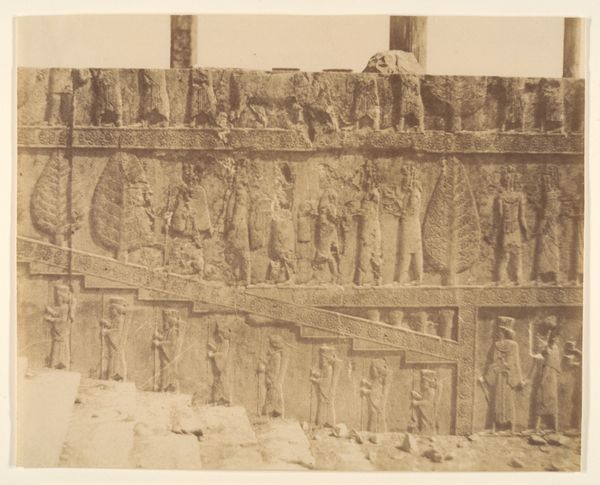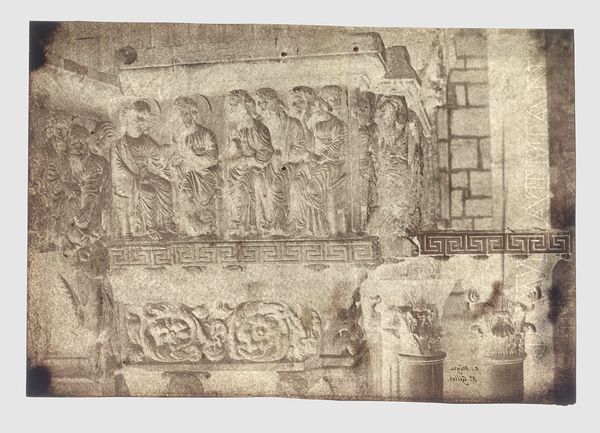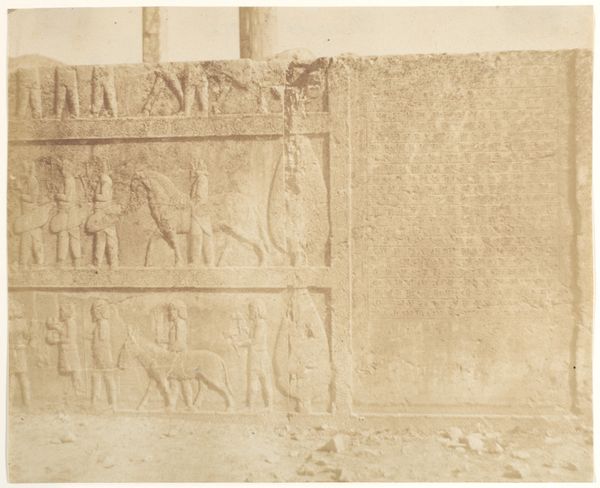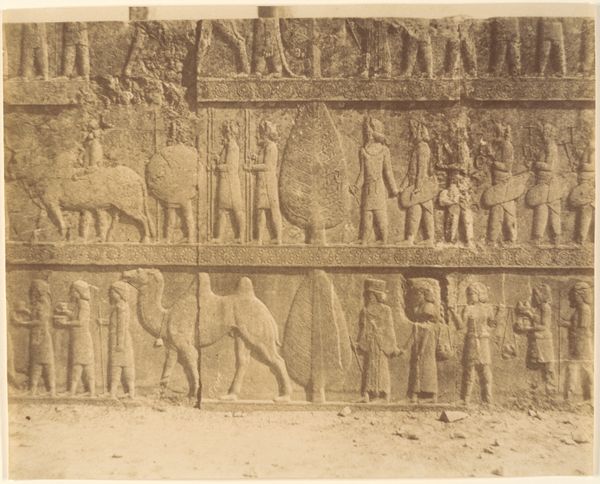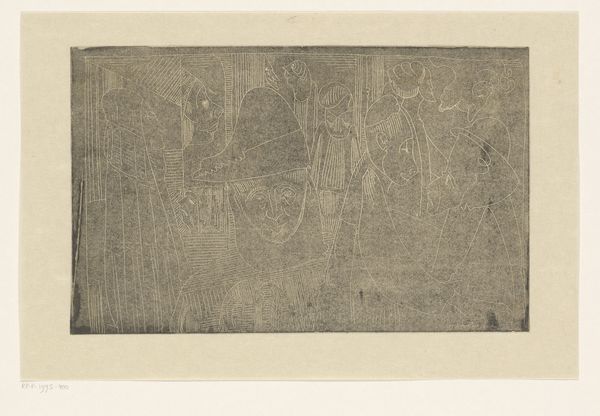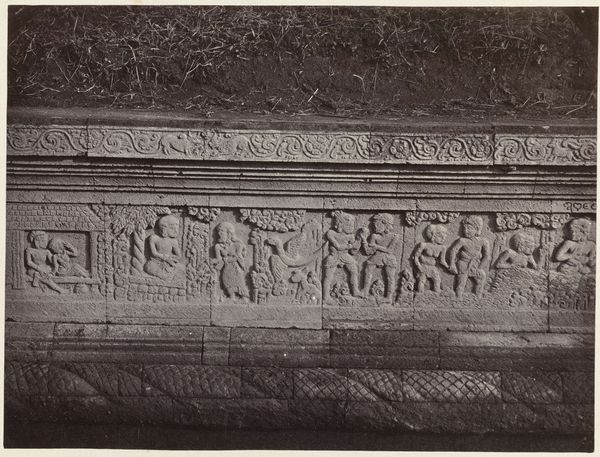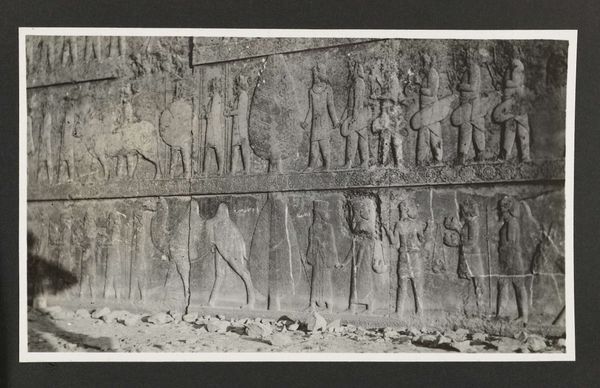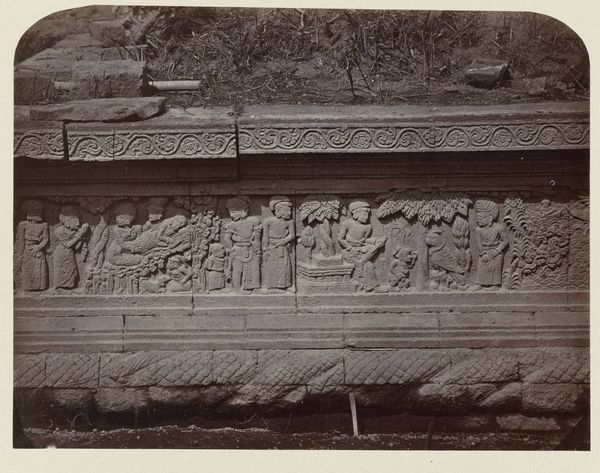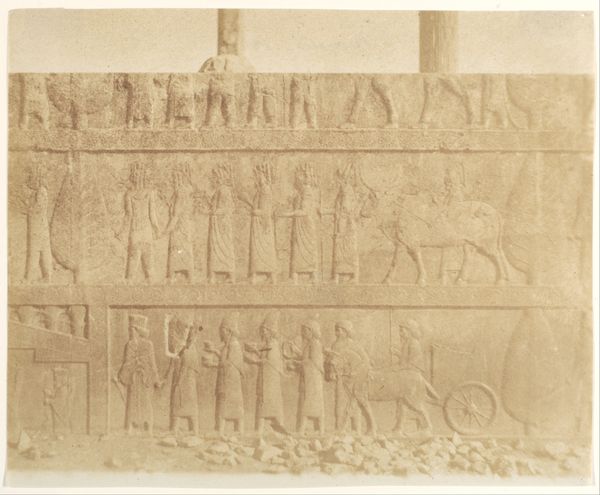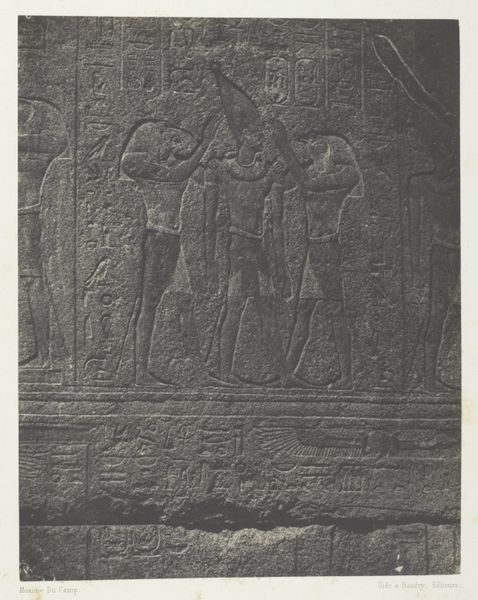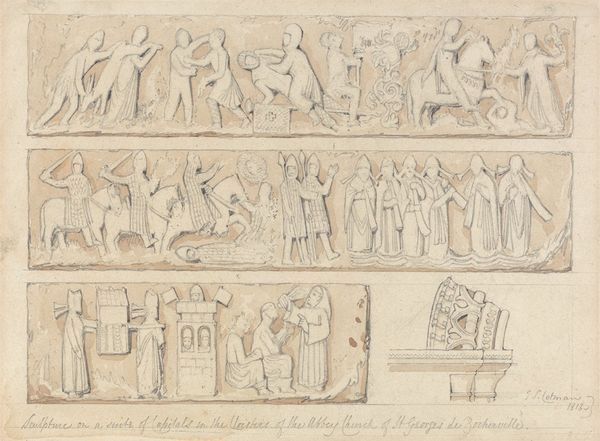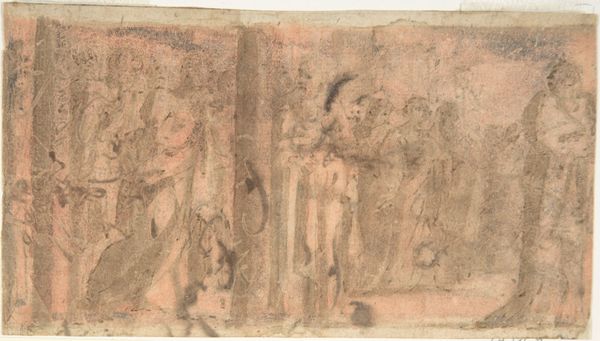
relief, photography, gelatin-silver-print
#
human-figures
#
relief
#
figuration
#
photography
#
ancient-mediterranean
#
gelatin-silver-print
#
human
#
history-painting
Copyright: Public Domain
Curator: Looking at Luigi Pesce's photograph from 1858, titled "Processione sulla facciata della Grande Scala," which translates to "Procession on the Facade of the Great Staircase," one is immediately struck by its quiet solemnity. What do you notice initially? Editor: The overwhelming sense of repetition, the unwavering profile view of these figures. There’s something almost…oppressive about it. Curator: Well, that's a compelling start. Pesce’s choice of medium, a gelatin silver print, adds a certain fragility, almost as if it is trying to capture something timeless from this relief. But let’s dig deeper; consider the socio-political context of 19th-century photography. The act of documentation itself… Editor: ...becomes an act of power. Exactly! Who gets to decide what's worthy of documentation, what history is recorded? It also feels very male-centric, perpetuating patriarchal narratives of power. Curator: Absolutely. Consider that the "Grande Scala" likely references Persepolis. This is an orientalist lens focused on the distant past. Moreover, the very process of photography was deeply rooted in the colonial project, of capturing and possessing. It echoes modern debates around repatriation. Editor: So it is no neutral recording but loaded with a historical vision of empire building and the exoticized "other." The soft sepia tone adds a romantic filter, almost glorifying this power dynamic. But, I also wonder, can the photographic lens also function to disrupt such narratives? To open other dialogues around the politics of seeing, and historical memory? Curator: A great point; photography certainly possesses disruptive potential. This work functions as more than a simple document; it embodies the complexities of representation. Considering these questions leads us to engage with history critically. It is so much more than surface, technique, or art. It invites us to question narratives and the structures within which these exist. Editor: Indeed, this artwork speaks to the inherent paradoxes that lie within capturing the image of the past; it gives pause for thought on who frames it and for whom it is intended.
Comments
No comments
Be the first to comment and join the conversation on the ultimate creative platform.
